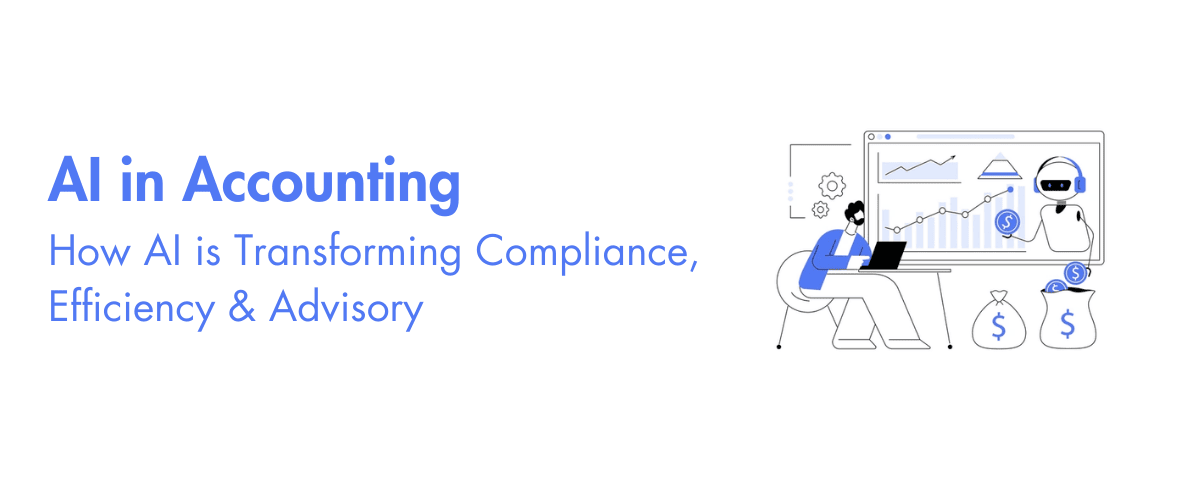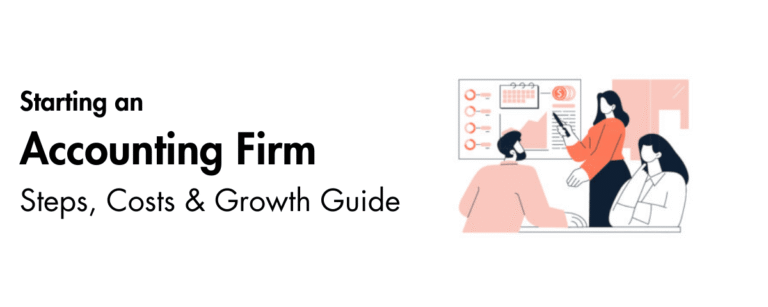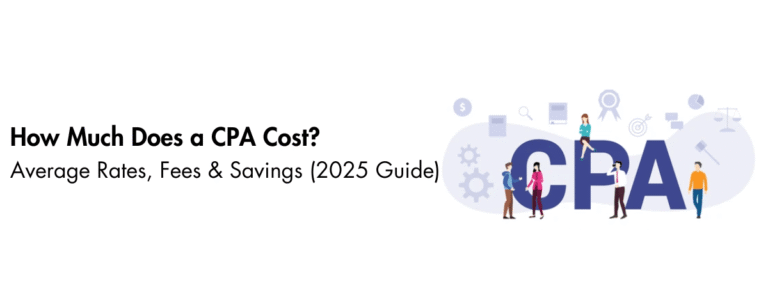Two cycles later, close week felt normal. People had time to breathe, and clients got their reports earlier with fewer questions. That relief you feel when things just work, that is what a good AI rollout should deliver.
You are probably seeing the same push from clients and partners. AI is no longer a novelty. Nearly half of accountants now say they use AI daily, and most firms plan to invest more in 2025, which matches what many of us see on the ground. The story is simple. You trim repetitive work, you standardize the close, and you shift people to higher value analysis, while staying within tight ethical and regulatory guardrails. (investors.intuit.com)
You do not need a moonshot. You need a clean pilot, human review where the model is unsure, and KPIs that prove the lift is real.
As you read, keep one practical lens in mind. This article was updated on October 5, 2025, and it is written for CPA, EA, and accounting firm leaders who want cycle-time, accuracy, and control gains without turning their practice upside down.
Table of Contents
- Key Takeaways
- What Is AI in Accounting?
- Key Technologies Powering Modern Accounting
- What, How, Wow, Your Practical Framework
- Controls That Make Auditors Comfortable
- Productivity and Capacity Gains You Can Measure
- Quality, Granularity, and Reporting Improvements
- Human Expertise, Still the Difference
- Risks, Accuracy, and Data Security
- How Firms of Different Sizes Are Using AI
- Implementation, A Phased Rollout You Can Trust
- Research Insights and The Road Ahead
- Putting It All Together
Key Takeaways
- AI can handle high-volume tasks such as transaction coding, invoice capture, reconciliations, and drafting memos, which lets you reassign time toward analysis and client conversations. Adoption and daily use continue to climb across the profession. (investors.intuit.com)
- The fastest wins come from clear scoping, confidence scores, and senior review. This keeps accuracy high and makes audits easier to support. Recent regulatory updates also clarify expectations for technology-assisted analysis. (cpapracticeadvisor.com)
- Firms report faster closes and better on-time performance when they automate the tedious parts of bookkeeping and close prep, then measure results against concrete KPIs like days to close and exception rates. Benchmarks vary by firm size, and industry groups continue to track days to close as a core metric. (apqc.org)
- Risks are manageable, not trivial. Accuracy and data privacy remain the top concerns for accountants, which is why you should stick to vetted tools, restrict sensitive data, and keep a human in the loop for judgment calls. (quickbooks.intuit.com)
- Big firms are moving, which signals where standards are headed. KPMG, EY, and Deloitte have announced AI upgrades in their audit platforms, paired with human-in-the-loop controls. Middle-market leaders are investing as well. (kpmg.com)
What Is AI in Accounting?
When we talk about AI in accounting, we mean a stack of practical capabilities you can put to work today. You use machine learning to classify transactions and flag outliers, natural language tools to pull structured data from invoices and contracts, generative models to draft explanations and footnotes, and simple bots to move data between systems.
The value comes from threading all of this through your existing reviews and controls, not from chasing new toys. Adoption data backs this direction. In 2025 surveys, 46 percent of accountants report using AI daily, and 64 percent say their firm plans to invest further this year. (investors.intuit.com)
A clean operating pattern looks like this. Models attach a confidence score to each suggestion, low-confidence items route to a senior, and your team documents the decision.
You keep a record of prompts and outputs where it matters, for example in audit support files or tax workpapers, so reviewers can see what happened and why. That mix of automation for speed and human judgment for edge cases is exactly what regulators expect as they update guidance around technology-assisted analysis. (cpapracticeadvisor.com)
Why this approach works
- You standardize routine work, so coding and reconciliations are consistent across clients.
- You surface the weird stuff faster, since anomaly checks run across the whole dataset.
- You make your seniors’ time count, because they only touch items where context and judgment matter.
If you do not have the in-house bandwidth to clear exception queues or prepare supporting schedules, an offshore back-office team can take on the routine pieces under your firm’s policies and sign-offs, which keeps expertise focused where it has the most impact, while maintaining compliance.
Key Technologies Powering Modern Accounting
Quick map: ML for classifications and outliers, NLP for document extraction, GenAI for drafting, and RPA for moving data between systems.
- Machine learning, you train models on labeled ledger data to suggest GL codes and flag unusual transactions.
- Natural language processing, you extract fields from invoices, receipts, and contracts, then map them to your chart of accounts.
- Generative AI, you draft close notes, variance explanations, and client emails, always reviewed by a human.
- RPA, you sync data between bank feeds, AP tools, and your GL, then kick out exceptions.
Across the profession, this “mix and match” is exactly how larger firms are upgrading their platforms. KPMG has integrated generative AI into its Clara platform and is rolling out AI agents to thousands of auditors. EY has added AI at scale to its assurance tech stack and is deploying agentic capabilities across tax and finance.
Deloitte has expanded GenAI inside Omnia. These are not experiments anymore. They are the new normal for audit and assurance workflows, and the same patterns apply to private company accounting and client accounting services. (kpmg.com)
What, How, Wow, Your Practical Framework
- What, define the scope by process, not by tool. Start with transaction coding, invoice capture, and reconciliation prep.
- How, add confidence scores, set thresholds for review, and log decisions.
- Wow, treat the pilot like a mini product, pick one close cycle, compare days to close, exception rates, and review time before and after.
APQC and other finance groups continue to highlight “days to close” as a core KPI. You do not need a proprietary benchmark to get value. Start with your baseline, aim to pull one week out of the cycle, and keep going once your exception rate and review load look healthy. (apqc.org)
Your starter KPI pack
- Days to close, baseline and target
- Exceptions per 1,000 transactions
- Rework rate on AI-suggested entries
- Senior review time per close
- Data capture accuracy from invoices and receipts
Controls That Make Auditors Comfortable
The goal is speed with evidence. Regulators have been clear that technology in audits is welcome, as long as firms obtain sufficient appropriate evidence and keep people accountable for decisions. Recent updates from the PCAOB clarify how technology-assisted analysis fits inside audit evidence and risk response standards, with effective dates tied to fiscal years beginning on or after December 15, 2025, subject to SEC approval. That mindset transfers neatly to client accounting work, even when you are not doing an audit. (cpapracticeadvisor.com)
Here is a simple control pack you can adopt.
| Control area | What you set | Why it matters |
| Confidence thresholds | Route low-confidence suggestions to a senior, lock auto-accept above a documented threshold | Keeps error propagation low and documents judgment |
| Evidence capture | Store prompts, outputs, and final decisions for material items | Supports audit trails and reviewer questions |
| Data boundaries | Keep sensitive PII and client secrets out of general models, prefer vetted, enterprise tools | Reduces privacy risk and supports client trust |
| Access and approvals | Segregate duties for data prep, entry, and approval | Preserves accountability and reduces control risk |
| Testing and drift | Periodically test model suggestions against ground truth | Catches performance changes before they hit the books |
If you are working with an offshore team for back-office tasks, keep the same controls. Your firm owns the policy, your seniors own sign-off, and the offshore team follows your playbook. This is where Accountably can help, staffing repeatable work under your rules so you can scale throughput without relaxing oversight.
Productivity and Capacity Gains You Can Measure
The fastest improvements show up in throughput and reliability. When teams automate the tedious parts of bookkeeping and pre-close, they free up time for analysis and client conversations. In 2025 surveying, 81 percent of accountants say AI has a positive impact on productivity, 86 percent say it reduces mental load, and 46 percent report daily AI use, which signals that these workflows are sticking. (investors.intuit.com)
Set a clear target. For many firms, pulling five to ten days out of the month-end process is realistic once invoice capture, coding, and exception routing are in place. Industry groups continue to emphasize days to close as a core KPI because it translates directly to client responsiveness and staff workload. (apqc.org)
Practical tip, publish a one-page “close calendar” that shows who owns each automation step, when reviews happen, and what to do if a tool flags low confidence.
Quality, Granularity, and Reporting Improvements
Speed is only useful if quality holds. You can actually improve reporting while you compress the timeline by letting models propose finer-grained categories, then having a senior approve or adjust. The benefit is simple. Your P&L gets more specific line items, your variance analysis gets clearer stories, and your audit support files are easier to build because the logic is consistent.
Concerns about accuracy and data privacy are real, which is why your choice of tools and policies matters. Surveys in 2024 showed accuracy and data privacy at the top of accountants’ AI concerns, and those priorities still show up in 2025. Stick to vetted vendors, keep client data in secured environments, and train your team to challenge low-confidence outputs. (quickbooks.intuit.com)
A quick review checklist for juniors
- Does the suggestion align with the chart of accounts and policy examples
- Is confidence above the threshold, if not, ask a senior
- Are there invoices or contracts to support the coding
- Is the narrative clear enough for a reviewer or auditor to follow
Human Expertise, Still the Difference
AI is a colleague that never gets tired, but it does not understand your client’s context the way you do. Keep your seniors in the loop where the model is unsure, where judgments carry risk, or where the story behind the numbers matters. That is the same human-in-the-loop approach Big Four firms describe in their audit platforms.
KPMG emphasizes a trusted AI framework and human review. EY highlights responsible AI principles and ties every suggestion back to vetted sources in its assurance platform. Deloitte frames GenAI as a way to speed work while keeping quality and trust intact. (kpmg.com)
Three habits help.
- Teach juniors to challenge the model when confidence is low, then document the reasoning.
- Reserve certain judgments for seniors, for example revenue recognition edge cases or complex accruals.
- Review exceptions as a team each close, so everyone sees patterns and gets better.
Risks, Accuracy, and Data Security
Treat AI like any other controlled system. Set boundaries on what data goes into which tool, and log who approved what. Regulators have been active here. The PCAOB adopted updates clarifying how technology-assisted analysis fits within audit standards and continues to explore guidance for responsible use of AI in auditing.
The SEC also approved changes that make it easier to hold individuals negligent for audit violations, which raises the bar on personal responsibility. Even if you are not auditing public companies, the spirit of these moves is useful, you need clear evidence and accountable review when technology is in the loop. (cpapracticeadvisor.com)
Accountants consistently cite accuracy and privacy as their top worries with AI. Keep your usage to tools that protect client data, minimize copy pasting into consumer apps, and prefer platforms that give you traceability. In 2024 and 2025 industry surveys, firms reported rising investment in AI paired with formal ethics guidelines for use, which is a good sign that governance is catching up. (quickbooks.intuit.com)
How Firms of Different Sizes Are Using AI
- Small firms, start with embedded AI in your existing GL or AP tools, put a checklist-based review on top, and aim for a tighter two-week close.
- Mid-size firms, standardize prompts, store evidence links for audit support, and consistently measure cycle time and exception rates.
- Enterprises, integrate AI into document review and financial reporting workflows with accountable human oversight, similar to the large-firm platforms now in market.
If you want to see where this is headed, look at announcements from the largest providers. KPMG has been integrating AI into Clara and adding AI agents across the audit process. EY is deploying AI at scale in assurance and building an agentic platform with NVIDIA for tax, risk, and finance work.
Deloitte continues to expand GenAI inside Omnia and was recognized for innovation in 2024. Middle market leaders are investing heavily too, for instance RSM’s plan to invest one billion dollars in AI to automate tax, accounting, and audit processes for clients. (kpmg.com)
Where Accountably fits
If your bottleneck is capacity, not software, an offshore back-office team can take on reconciliations, AP coding, invoice capture, and exception clearing within your policies. Accountably focuses on compliant offshore staffing and back-office solutions for CPA, EA, and accounting firms. The work stays under your controls and sign-offs, and you keep final responsibility for quality and client communication.
Implementation, A Phased Rollout You Can Trust
- Phase 1, pick one client or entity, automate invoice capture and coding with confidence scores, and add a senior review lane.
- Phase 2, extend to reconciliations and pre-close schedules, add a weekly exception review, and measure days to close.
- Phase 3, move to narratives, for example variance notes and client summaries, with clear sign-offs and evidence capture.
Keep changes small enough that you can back out safely, and keep your team in the loop so they know what is changing and why. The goal is a standard two-week close for many clients, with fewer late nights and cleaner files. (apqc.org)
Research Insights and The Road Ahead
The direction of travel is clear. Adoption and investment keep rising among accounting firms, and the tools are shifting from pilots to daily use. Surveys in 2025 show 46 percent of accountants use AI daily, 81 percent see a productivity lift, and 64 percent plan further investment. Pair that with ongoing regulatory updates that recognize technology-assisted analysis, and you have a strong case to modernize while staying conservative about risk. (investors.intuit.com)
You will also see platform-level moves at the top of the market. EY’s global assurance platform added AI capabilities at scale in 2025, KPMG continued to advance Clara with AI agents, and Deloitte expanded GenAI in Omnia. These investments shape vendor ecosystems, training, and expectations for evidence, which eventually filter down to private company accounting and CAS teams. (ey.com)
FAQ
How is AI being used in accounting right now?
You are using AI for coding transactions, invoice and receipt extraction, reconciliations, variance drafts, and client summaries. Firms also apply anomaly checks across datasets to catch outliers early. Adoption keeps rising, with nearly half of accountants reporting daily use in 2025, and most firms planning further investment. (investors.intuit.com)
Will AI replace accountants?
No. The best results pair automation for repeatable tasks with human judgment for context and risk. Big firms are explicit about keeping people in the loop inside their audit platforms, and regulators expect clear evidence and accountable review. (kpmg.com)
Which Big Four firms use AI in audit and assurance?
All of them are active. KPMG integrated AI into Clara in 2024 and expanded it in 2025, EY added AI at scale across assurance in 2025, and Deloitte expanded GenAI capabilities in Omnia in 2025. (kpmg.com)
What risks should I watch first?
Start with accuracy and data privacy. Use vetted tools, keep sensitive information in secured systems, and require a human review for low-confidence items. This aligns with what accountants report as their top concerns and with current regulatory guidance. (quickbooks.intuit.com)
What KPIs prove this is working?
Track days to close, exception rates, rework on AI-suggested entries, senior review time, and invoice capture accuracy. Industry groups continue to treat days to close as a primary measure, so you should too. (apqc.org)
Putting It All Together
If you want AI to help, make it boring in the best way. Start with one process, insist on evidence, and publish the KPIs so the whole team can see the lift. Your seniors apply judgment where it matters. Your juniors learn faster because exceptions are visible. Your clients get timely, cleaner reports.
If you need more hands to keep the engine running, consider an offshore back-office lane that follows your policies and keeps your team focused on higher-value work. That is where a partner like Accountably is a good fit, only when capacity and compliance need to move together.
Final thought, the best AI program is just good accounting with faster feedback.







